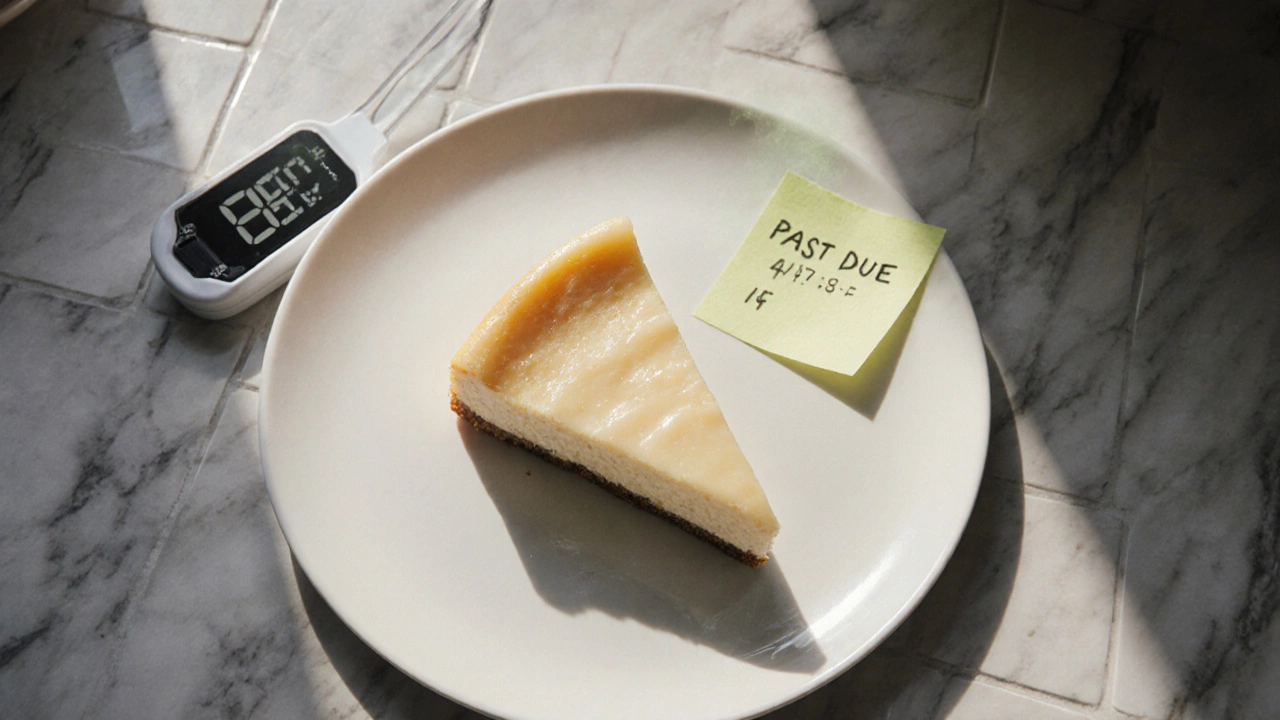
When Should You Skip That Slice? Understanding Cheesecake Safety
Learn when and why to avoid cheesecake, covering food‑safety signs, health conditions, ingredient risks, storage tips, and safe alternatives for a worry‑free dessert.
When dealing with Dessert Health Risks, the potential negative effects of sweet treats on your body, including sugar spikes, allergens, and spoilage hazards. Also known as sweet food safety concerns, it touches everything from daily indulgence to special occasions. The first thing most people overlook is how a simple sugar rush can lead to energy crashes, cravings, and even long‑term metabolic stress. Pair that with hidden allergens like gluten or nuts, and a seemingly innocent bite can turn into a health emergency for sensitive folks. Add improper storage into the mix, and you risk bacterial growth that makes even the tastiest cake unsafe. Below we break down the most common culprits, why they matter, and what simple steps keep your desserts from becoming a risk.
One major player is Sugar Content, the amount of simple carbohydrates in sweets that cause rapid blood‑glucose spikes. High sugar loads not only trigger a quick energy surge but also force your pancreas to release a flood of insulin, which can lead to a crash later. Over time, repeated spikes increase the chance of insulin resistance, a stepping stone toward type 2 diabetes. Knowing the sugar level in a recipe helps you balance portions or swap in lower‑glycemic alternatives like fruit‑based sweeteners.
Another hidden danger is Allergens, ingredients such as nuts, dairy, gluten, or eggs that can trigger allergic reactions in susceptible individuals. Even if a dessert isn’t marketed as “nut‑free,” cross‑contamination can happen in a busy kitchen. A single accidental exposure can cause anything from mild itching to severe anaphylaxis. Checking ingredient labels, using dedicated equipment, and clearly labeling homemade treats are simple habits that protect everyone.
Food Safety, practices that prevent foodborne illness, including proper cooking, cooling, and storage ties the whole picture together. Many dessert mishaps stem from ignoring the “danger zone” (40°F‑140°F) where bacteria multiply fastest. For example, a batch of homemade fudge left at room temperature for too long can develop harmful microbes, while a refrigerated cake that’s been stored too long may develop mold. Following clear guidelines—like chilling fudge within two hours or freezing brownies for longer keep‑alive—keeps the risk low.
Finally, Storage Guidelines, the recommended methods for keeping desserts fresh and safe, such as refrigeration, freezing, or airtight containers are the practical toolbox for everyday bakers. Knowing which desserts need a cold environment (e.g., cream‑filled cakes) versus those that stay fine at room temperature (e.g., certain cookies) saves you from waste and illness. Simple steps like using airtight tins for brownies, wrapping frosting‑covered cupcakes tightly, or labeling frozen treats with dates can make a huge difference.
These factors intersect in clear ways: Dessert Health Risks encompass sugar content, allergens, and storage guidelines; managing them requires solid food safety practices; and proper storage directly reduces the chance of spoilage‑related hazards. By understanding these relationships, you can enjoy sweets without the hidden dangers.
Below you’ll find a curated list of articles that dive deeper into each of these topics—how to store fudge safely, the truth about vegan candy, real‑world tips for keeping brownies fresh, and more. Whether you’re a beginner looking for basic safety tips or a seasoned baker hunting for advanced storage hacks, the collection offers practical insights you can start using today.

Learn when and why to avoid cheesecake, covering food‑safety signs, health conditions, ingredient risks, storage tips, and safe alternatives for a worry‑free dessert.